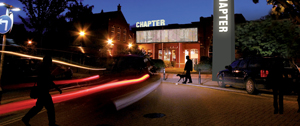When the Arts Council of Wales challenged Welsh arts organisations to examine the quality of their creative activities and the efficiency of their businesses, it pledged to embark on an organisational review of its own. Nick Capaldi explains the outcome of this exercise

As belts are tightened across the public sector, organisations such as ourselves are expected to work effectively, but at a lower cost. The Arts Council of Wales’s Organisational Review, the conclusion of which we announced earlier this month in our publication ‘Creating an Agenda for Change’, explains how we’re responding to this requirement.
The changes that we’ll be introducing in April 2012 have their origins in our Investment Review in 2010, when we made a commitment to the transformation and renewal of our own organisation. This commitment was given added impetus by the funding settlement that we received from the Welsh Government last year, which required us to reduce the proportion of our grant-in-aid that we allocate to our running costs by 12% over three years. In comparison with the reductions faced by our colleagues at Arts Council England this might seem small beer, but for us it still means significant change. So we chose to approach the task as a moment of opportunity, to look carefully at what we do and to challenge ourselves to consider how we could be more relevant and useful in a fast-changing world.
As part of the review process we commissioned independent research into the services that we provide, with views passed on to us from artists, arts organisations, stakeholders and our funders in Government. The research was instructive. We were told that the Arts Council needed to be a strong, independent and authoritative champion of the arts in Wales, a source of specialist expertise in and about the arts, and an efficient and fair distributor of public funds. And importantly, people wanted us to be accessible and available, wherever they were in Wales.
Some new themes also came through strongly. In particular, we were urged to ensure that we were attuned to the changing ways in which the arts today are created, presented and enjoyed. One of the ways we can achieve this is through our team of arts experts. As you’d expect, expertise in the arts will remain at the heart of our organisation in the future. And in all, we’ll have over 40 dedicated arts experts, spread across Wales, who’ll be using their knowledge and experience to help grow and develop the arts, at home and abroad.
But we also need to recognise that today’s artists increasingly want to explore creative possibilities across a wider diversity of arts practice. The familiar artforms across the performing, visual and applied arts are as important as ever. But as artists and organisations work across the arts, traditional artform boundaries are becoming increasingly blurred. Business models in the arts are becoming more sophisticated and developments in digital technology are opening up new opportunities to make and distribute art in ways that were unimaginable only a decade ago. We need to organise ourselves around the expertise and skills that this changing world demands.
Adapting to new ways of working isn’t something that we can or indeed want to do on our own. We want to build a new kind of partnership with the artists and arts organisations that we support. Quite rightly, the Arts Council is expected to demonstrate leadership – of the arts, for the arts and through the arts. And while we should be bold enough to take the difficult decisions when these are needed, we should also be sensible enough to seek out the help and expertise that exists in abundance outside our own organisation in the arts in Wales. This will require us to adopt a very different mindset when we talk about partnership and collaboration.
So what are the other changes that we want to introduce? There will be fewer posts in our new staff structure – we reduce from just over 90 full-time equivalent posts to 76, and over the next few weeks we’ll be redeploying staff, where we can, into roles in the new organisation. We’re also creating a new senior management structure, simplifying our Director level posts by moving from the current dual tier arrangement of two National and three Regional Directors, to a single tier of five Directors. Included within this team will be senior staff leading on the Arts, Engagement and Participation, and Enterprise and Regeneration.
Our highly regarded arts services will continue – Wales Arts International, Collectorplan (our loan purchase scheme) and Night Out (bringing high quality small-scale performance to local communities across Wales). However, we’ll also be introducing new areas of activity, including online applications and an improved information service.
The coming months will be challenging as we manage the process of change. There are always risks and uncertainties in trying to embrace a new future that can never be fully known in advance. However, excellence, in everything that we do will continue to be a fundamental guiding ambition, as will be our determination to extend the reach and impact of our activities, touching the lives of more people and communities across Wales. As we say in Creating an Agenda for Change, with the imagination, energy and commitment of our staff, anything is possible. And with the collaboration and goodwill of partners and stakeholders, we’re confident that we can work together to achieve continued success for the arts in Wales.
Creating an Agenda for Change can be read at: w www.artswales.org/about-us/staff/organisational-review



